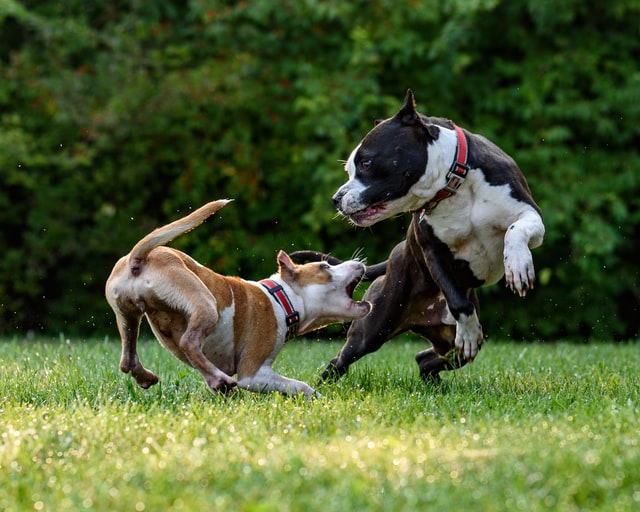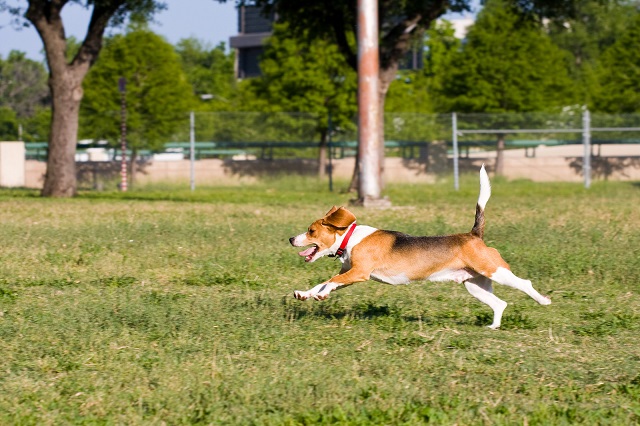As a beagle owner, you know the little pooches are high-spirited (a nice way of saying “stubborn”). Beagle aggression and biting can become a problem if not dealt with early on. Most new owners have trouble with their Beagle biting or nipping at some point, but they often don’t understand the training necessary to “nip it in the bud” before it’s too late.
If left on its own, what starts as an annoying biting or nipping problem can turn into a serious issue, threatening your own family, as well as strangers. If your dog has a biting problem, it’s time to take immediate action and put a stop to it.
Beagle Puppies – It’s Best to Start Here
Training your Beagle while he’s still a puppy is the best and easiest time to do it. By puppy, we mean less than 6 months in age. These are the formative years where the dog is going to learn and retain the most.
Training your puppy can be good or bad. Good habits and behavior, if taught and reinforced early, will stick as the dog ages. The same is true for bad habits, especially when faced with a Beagle aggression problem – if you don’t get it right early on, you’ll have a more difficult time of it later.
Many owners mistakenly think that puppy nipping is just playfulness or teething. Instead, look at this for what it really is – a Beagle aggression problem. Your puppy’s instinct is to test and assert his position in your pack (even if you only have one dog, your family is its pack). Biting is a way to show dominance and if you let it go unchecked, the puppy learns that he is the alpha dog – not you. This can lead to serious Beagle aggression problems later in your dog’s life – when they’re harder to undo.
The key is to start early – while your puppy is most open to learning. There are a number of ways to go about training your dog. One way is to mimic what the puppy would learn from its own mother and the rest of the litter. This can be a light “nip” on the neck, which is how mother Beagle would teach her pup who’s boss dog. If you don’t like a mouthful of dog hair, try using your hand – just be careful not to overdo it – you don’t want to injure your puppy.
Another mimic method is to make a whining noise if the puppy nips or bites. This is a signal that you have been hurt, which tells the puppy that he needs to back down.
An alternative to mimicking the mother is to use replacement therapy. When the puppy nips, you replace your hand (or whatever body part your pup attacked) with a toy, such as a rubber dog bone.
Beagle aggression in the form of biting and nipping can get out of hand. If you’ve tried these techniques, but still need help, it’s time to bring in the big guns – seek out a good trainer or obedience instructor to help you with the problem. Another important point is to remember that repetition is important – don’t quit before your dog has learned his new habit.
Don’t Let Beagle Aggression Get Out Of Control…Click Here To Learn How To STOP IT NOW!
One Year Old Beagle – Don’t Let It Become the “Terrible Teens”
At a year old, your Beagle is now in his “teenage” years. And if he started with some bad habits, they can go from bad to worse. Puppy nips will become play biting which will end up as – you guessed it – Beagle aggression.
If you’ve reached this stage with your Beagle, all is not lost. The key is to set boundaries. Stop aggressive games like wrestling, tug-of-war and other activities that teach your dog dominant behavior. These will make a Beagle aggression problem worse.
Next, set some territorial boundaries by limiting your dog’s run of the house or yard. This may include some limited “crate time.” He needs to learn that he is not the alpha dog.
This is a good time for professional obedience training, especially considering the strong will of your Beagle. Don’t let it get out of control and don’t be afraid to get the right help when you need it.
Older Beagles – It’s Not Too Late
As your dog goes from his “teens” to adult maturity, a Beagle aggression problem becomes a major safety issue. Dogs that continue to bite at this stage have been known to turn on their owners and are very likely to seriously harm someone.
If the dog is biting into adulthood, he sees himself as the alpha dog – the leader of the pack – and it’s only because he was allowed to see himself that way (yes, it’s your fault). Biting or nipping after one year means you need to hire a professional to handle the situation immediately.
A Beagle aggression problem that has progressed into the adult dog years presents a serious danger to others and can lead to attack without warning. He’s expressing his dominance and it will be very challenging to retrain him, so don’t try to do this on your own.
The best thing is to start training when they’re young puppies. It’s rare to find a grown dog biting that wasn’t allowed to do it as a puppy.




